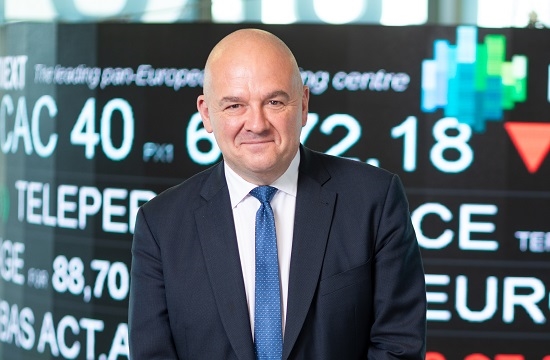Nymex and LCH Clearnet up the ante in battle with ICE
Nymexs attempt to capitalise on the markets discontent with ICE, and its split with LCH Clearnet to set up its own clearing service, will now gather pace given that ICE Clear has received regulatory approval, as it targets the launch of European ICE lookalike energy contracts.
Sam Gaer, executive vice president and chief information officer at Nymex, said that ICEs decision to split from the Anglo-French clearinghouse had presented a unique opportunity to develop a relationship with LCH Clearnet. He added that Nymex would implement a procedure to allow traders to move volume across, but he refused to clarify the mechanism in detail.
Nymex will launch ICE-lookalike energy contracts which will be traded on CME Globex and cleared by LCH Clearnet ideally before ICE launches its own clearing service in July.
At the heart of the initial offerings will be Brent futures and options and WTI crude oil, which will also offered in both futures and options representing a direct challenge to ICEs most active European contracts but Gaer said we are going to launch 100-plus products by mid 2008.
While Gaer hailed the products, he stressed that the new venture will also offer cross-margining between the new contracts and existing Nymex futures and options, a detail which he believes will entice many ICE members to trade the new suite. Firms will be able to trade the ICE equivalent contracts on Nymex, which many of them will also be members of. This will therefore reduce margin requirements, said Gaer. He added that margin requirements are a focus of many large institutions and as such any reduction will free additional capital to trade more.
Gaer said that the margin reductions will occur in two phases. Unilateral margin credits will be introduced first followed by full cross margining in the second phase, which Nymex said should be made available by the end of 2008, subject to regulatory approval. The New York exchange estimated that under the first phase, margin requirements in the WTI and Brent contracts will be approximately 85%.
However, as Nymex hailed the influence of these reduced margin requirements on customers decisions, in a straw poll by FO Week, many in the market said that a reduction in margin requirements may not be sufficient to steal volume from ICE. While a number said that the move by Nymex was particularly savvy, liquidity is a far greater concern. Most important to the users is liquidity. This is far more important than where it clears or the cost of clearing. I dont see people thinking of trading with Nymex when the liquidity is on ICE. They didnt do it before and will not do it now, said one head of a European bank and a member of ICE.
An FCM head agreed, adding that the nature of his business means that trade would be directed by customer wishes. But he compared the decision facing customers as like a choice between personal bank accounts. How often do you change banks? You dont despite the fact it might offer you a slightly higher rate of interest, he said.
A market observer agreed but he added that the imminent move by CME Group to acquire Nymex may also deter people from moving volume across. CME Group already controls a significant proportion of trade in the US derivatives marketspace. Will people also want to give them the Brent volume, should it acquire Nymex? I dont think so, he said.
While many within the market were wary of Nymexs chances of stealing volume away from its rival, Gaer stressed that he had confidence that the scheme would work, adding that the opportunity for trading firms to make money will be too good to resist. Markets today are linked electronically so where there is money to be made, people will trade. If we offer a marketplace with appealing regulatory and clearing structures, people will make markets and trade - for either or both, Gaer said. He refused to specify how many trading firms have privately committed to trade the new contracts, adding that, while we can not comment on the business of individual trading shops or customers, our alliance with LCH has been very positively received by everyone weve spoken to.
Although many within the market have said that ICE will emerge relatively unscathed, some have speculated that the agreement between Nymex and LCH Clearnet may be extended to compete with emissions exchange European Climate Exchange (ECX), which trades and clears via ICE. Sources have said that while Nymex is seeking to attack ICEs European contracts, it opens the door to compete with ECX too. As such, Nymex could expand its European offering by offering Green Exchange emission contracts - an exchange in which Nymex is a partner. However, while Gaer refused to rule out extending the arrangement in the future, he said his focus was on the energy initiative. Right now we are concentrating on launching the energy products. We are very excited about the Green Exchange venture and wont dismiss the possibility of talking to LCH about it, but we are currently completely focused on this launch, he said.
Found this useful?
Take a complimentary trial of the FOW Marketing Intelligence Platform – the comprehensive source of news and analysis across the buy- and sell- side.
Gain access to:
- A single source of in-depth news, insight and analysis across Asset Management, Securities Finance, Custody, Fund Services and Derivatives
- Our interactive database, optimized to enable you to summarise data and build graphs outlining market activity
- Exclusive whitepapers, supplements and industry analysis curated and published by Futures & Options World
- Breaking news, daily and weekly alerts on the markets most relevant to you



